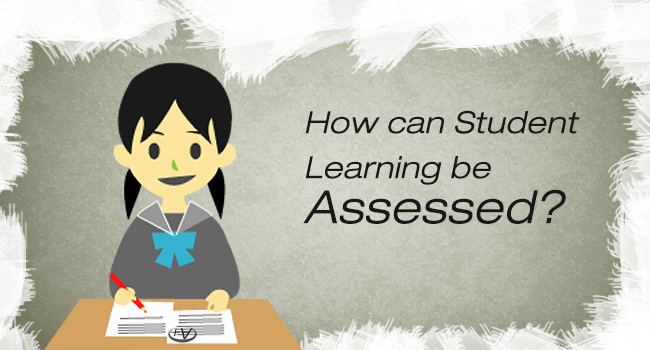Categories(658 Blogs)
Select Category
Watch Right Now
Teacher App - Class
Schedule & Attendance Management App
Parent App from Edsys

Best School Bus Tracking System

Cashless School - For Smart Schools of Tomorrow


4 Smart Ways to Evaluate Student Learning

“Education is the key to success in life, and teachers make a lasting impact in the lives of their students”- Solomon Ortiz
How to know whether students are achieving specific learning goals of their course? Class tests and assignments can give a glimpse of teaching effects and student satisfaction. But, it doesn’t help you know how much the students are learning.
Get Best Free Art Learning Apps (Check it Now)
Teaching effectiveness can be improved by changing the way student learning is assessed. Time table management system helps teachers to schedule their year better. Likewise, better assessment of students helps in better effectiveness in teaching.
The traditional method of evaluating a student’s knowledge is by conducting tests at the middle and at the end of each semester. Some teachers might think that giving home works and assignments can help students gain more subject knowledge. Students who perform well in school home works and assignments might not perform impressively in the exam.
Knowledge is much more than grades. Only an effective learning process can enhance students to be more than mere grades. It is possible that students might get confused between two closely related ideas. Better assessment clears all the confusion.
Ways of Assessing Student Learning During Class;
These assessment techniques are increases the effectiveness of the teaching and the quality of the learning.
- Brainstorming
Brainstorming is the process of generating new ideas through group discussion. Every participant is expected to think and present their opinion loudly with confidence. When the evaluation session begins, analysis, criticism and discussion of the presented ideas are allowed.
Steps of Brainstorming
1. Teachers must present an open-ended question for students to discuss or solve.
2. Students are free to work individually, in pairs or in small groups
3. After students have shared ideas with class, notes must be made on the board
4. At the end of each session, children can express the opposite views to the ideas presented.
Importance of the activity: Brainstorming promotes critical, creative thinking, imagination and confidence.
- Concept Map
Concept mapping is an innovative technique of presenting knowledge through graphs. It is a network of concepts. Concept mapping begins with a main idea or concept and then extended to branches. The maps simple shows how the main ideas can be divided in to fragments.
Concept Mapping and its purposes
- Ideas can be easily generated
- Simple design for complex ideas
- Students can be asked to create impressive Concept Maps and the very best can be given prize
- Concept Maps can be either created individually or in groups
Advantage of the activity: Complex ideas can be communicated easily.
- Decision Making
Providing students with a situation that they need to work on can increase their thinking capability and quick problem solving ability.
Steps of Decision Making;
- Give students the responsibility of solving some important issue
- Students can either make effective plans individually or can form a group to develop an effective plan
- Students should announce the plan and the ideas behind it to the class
- Each student or group can react to the proposal put forth
Advantages of Making Decision: Critical and creative thinking within the given time span.
- Minute Paper
Minute Paper is a segment that can be arranged after every lecture. The activity makes students concentrate more in class.
Steps for Minute Paper:
- After every lecture students have to spend 5 minutes writing the summary of the lecture
- Randomly picked student must share what he /she has written
- Key points of the day can be written
- Students can also share the feedback and suggestions also, if any.
- Multiple-Choice Survey
Another innovative technique is Multiple-Choice Survey. It can be used after the lecture.
Get Best Free Art Learning Apps (Check it Now)
Steps of Multiple-Choice Survey;
- Teacher should write questions based on a lecture, preferably conceptual in nature on the board. The questions should contain four multiple choices
- Students can answer the questions raising there hands
- Students can form groups and after discussion conclude to a answer for which they should give convincing explanation later
- Teachers must clarify the misconceptions before proceeding
Contribution of Multiple-Choice Survey: critical thinking of the students and reflection of students understanding can be obtained.
Recent Blogs
Our Educational Services
Popular Blogs
Subscribe

SUBSCRIBE TO OUR NEWSLETTER
Sign Up and Recieve the Latest News
Don’t Worry, We Don’t SpamExplore Our Extensive Researched Educational App Directory
Visit Now














